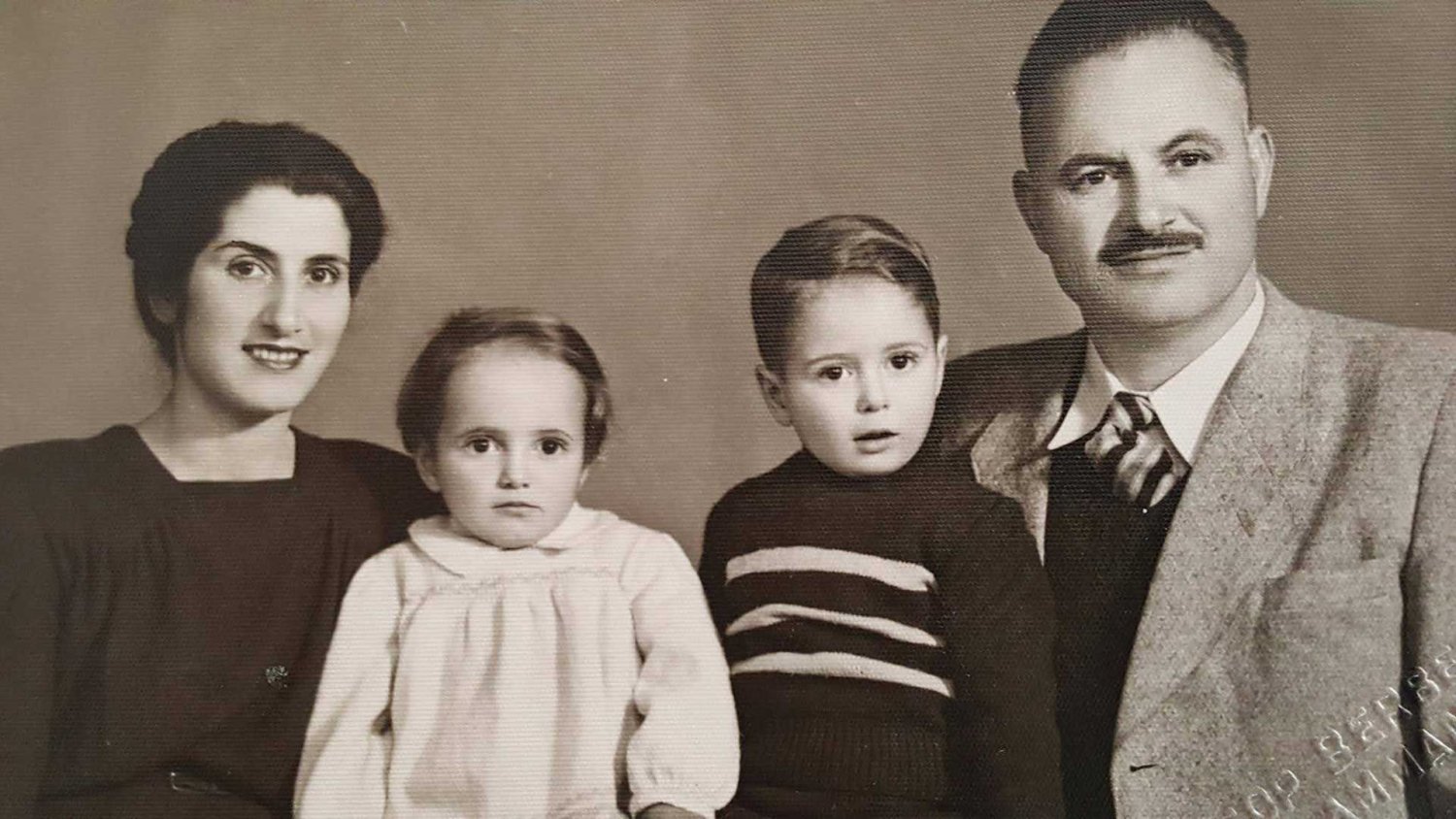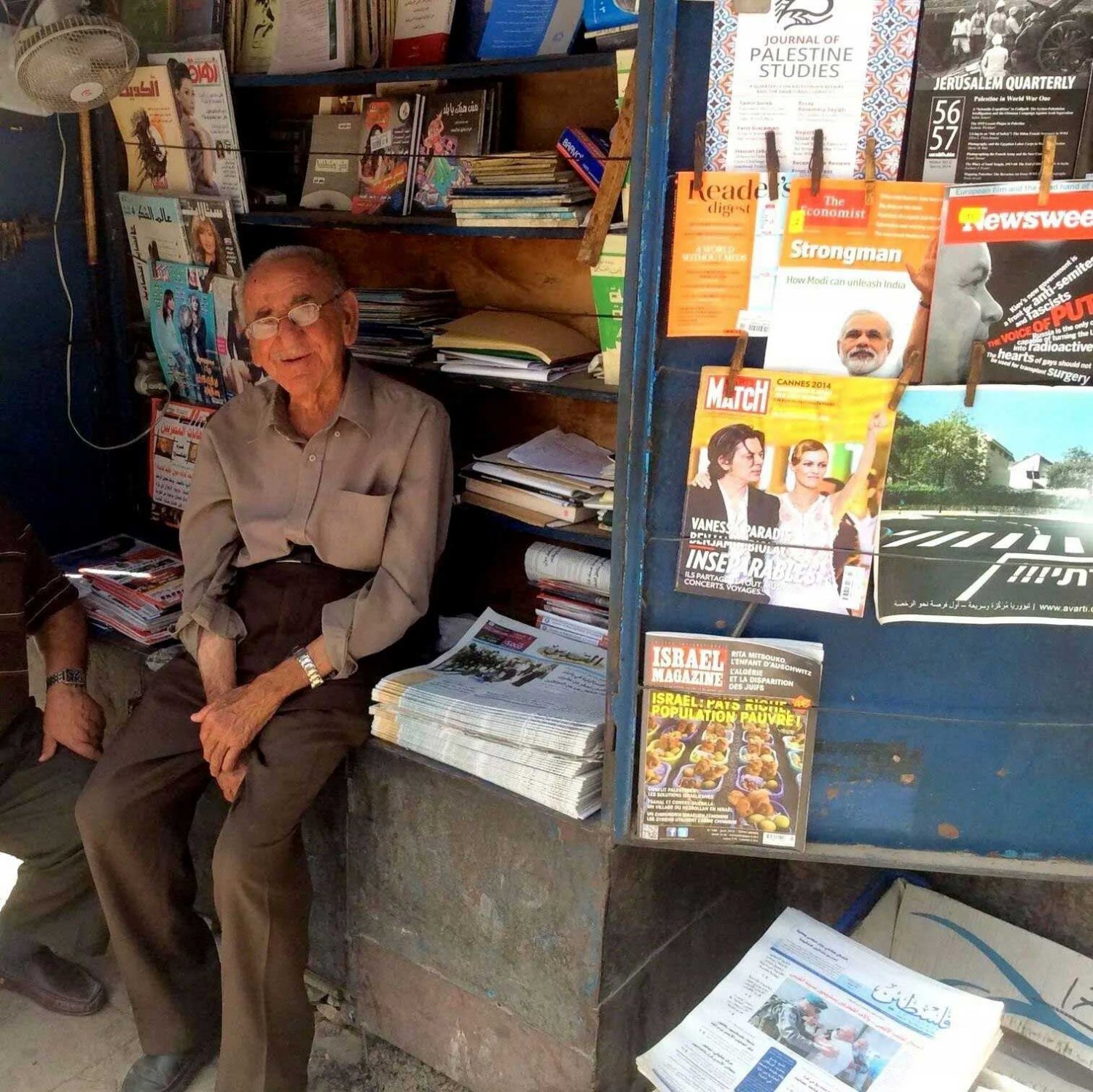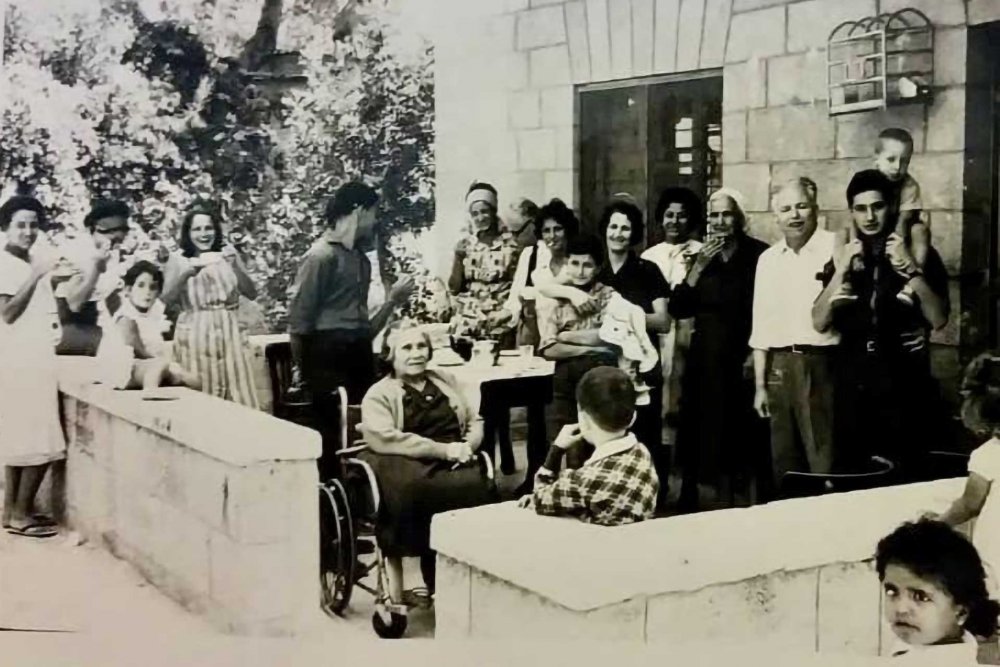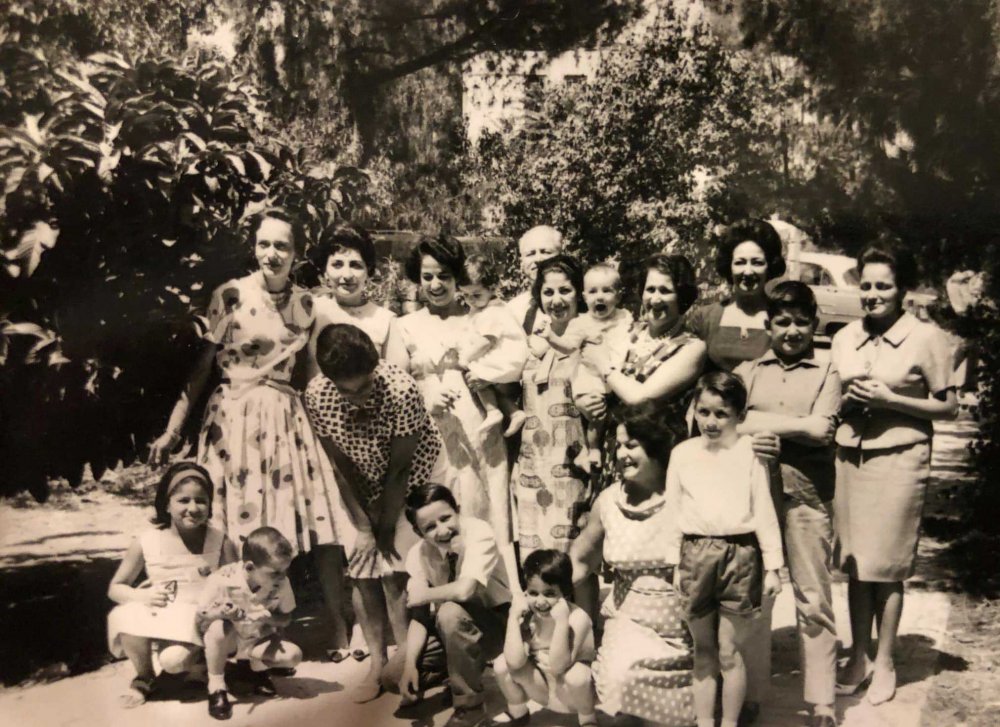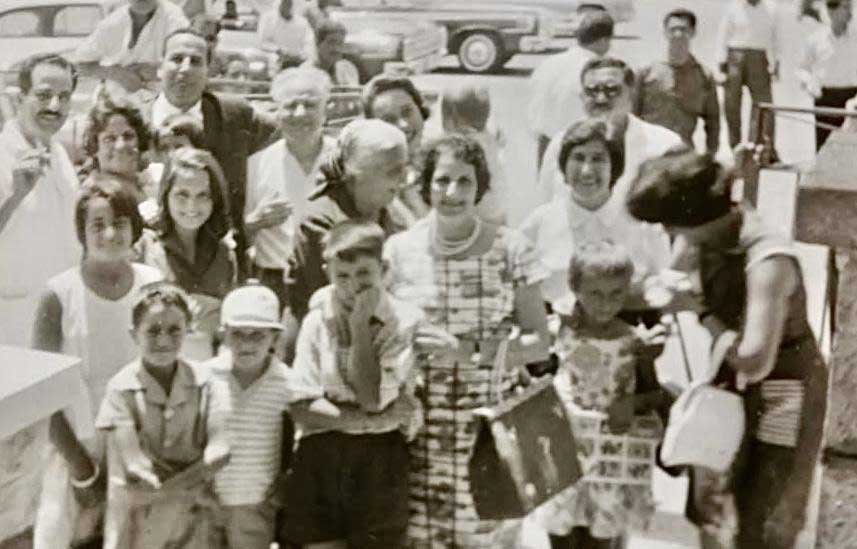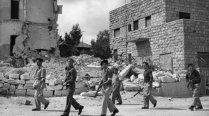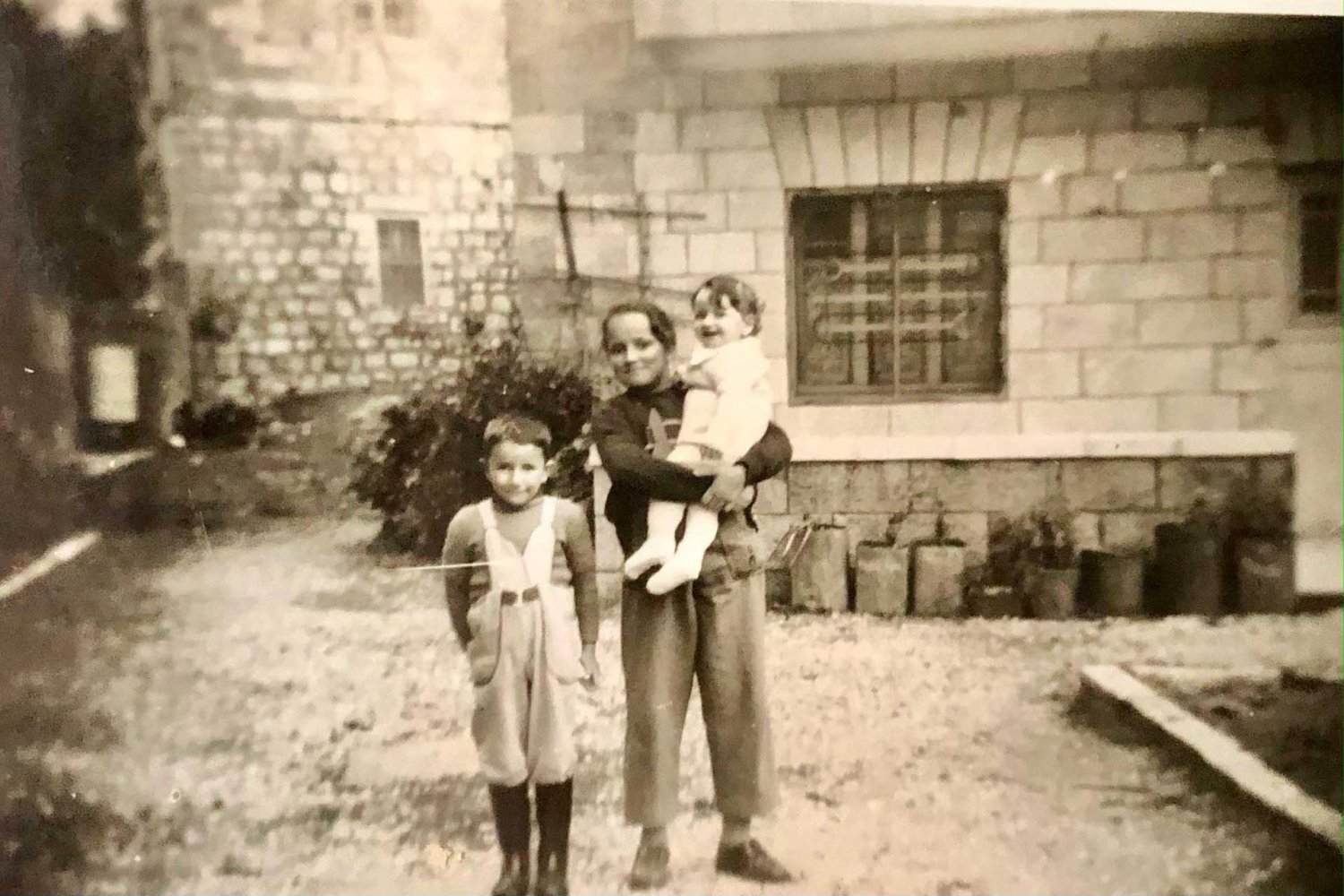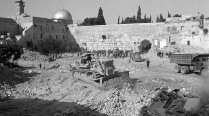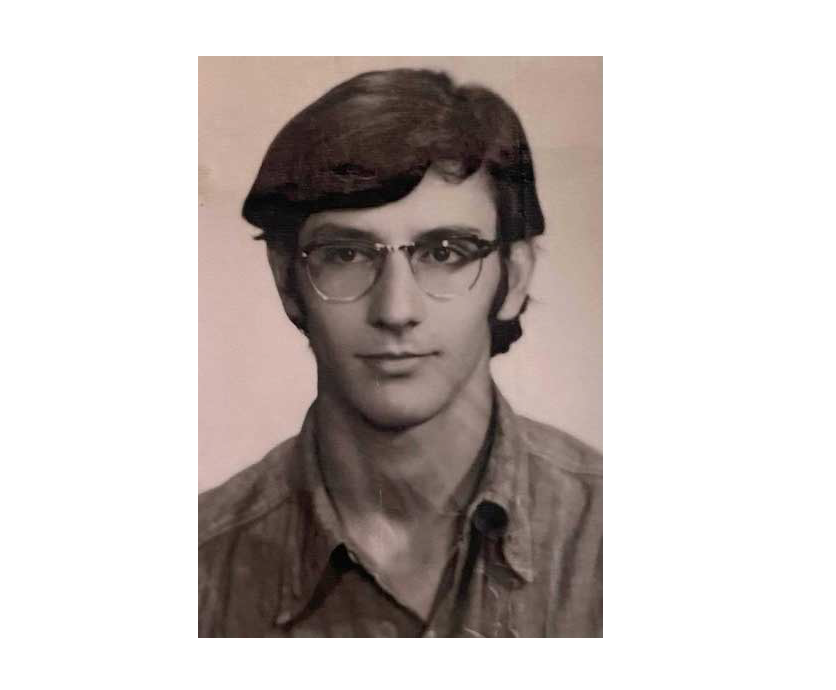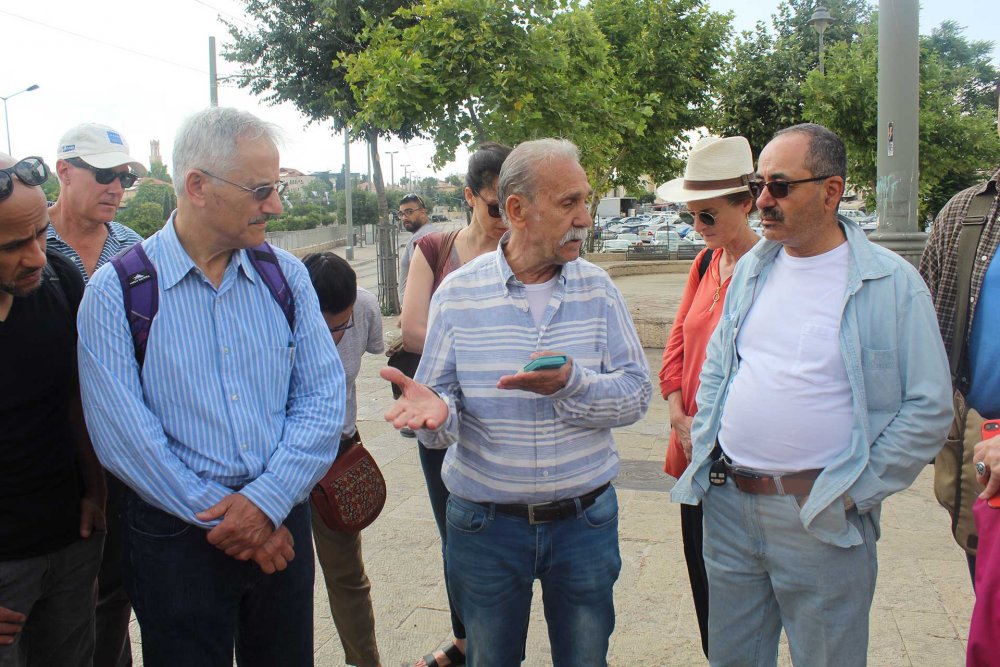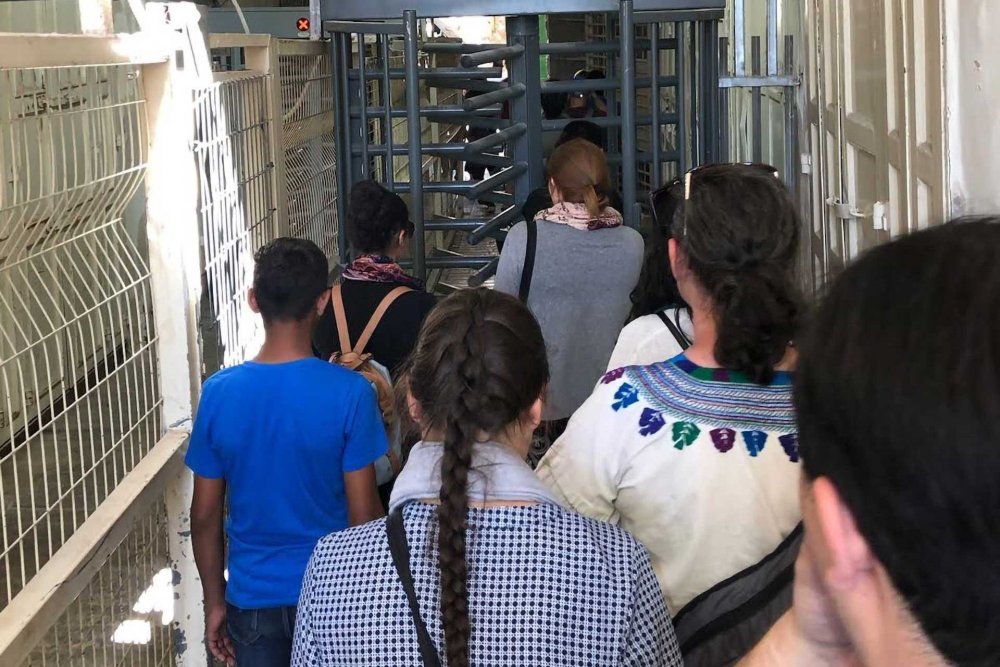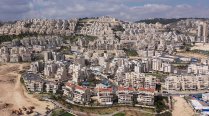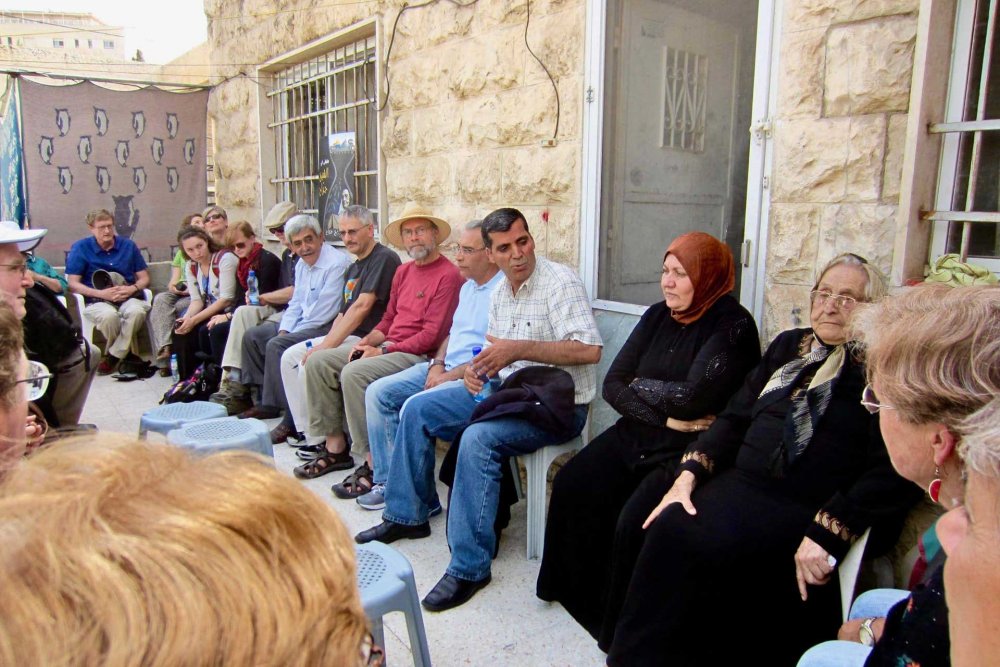By the time Philip Farah was born in East Jerusalem in 1952, his family had begun to recover to some extent from the trauma of the war and their displacement from what is now West Jerusalem, which became Israel. Gregory Farah and Mary Qamar, Philip’s parents, lost their home in Baqa‘ al-Fuqa when they sought temporary refuge on the Jordanian side of the city that became East Jerusalem, but after a period of frequent dislocations including a brief refuge in a church, they settled in Sheikh Jarrah, in a tiny apartment close to the dividing line between East and West Jerusalem. Both of them found jobs, but Mary spent part of each week in Hebron as a teacher at a United Nations (UN) school serving Palestinian refugees. Despite her regular absence, Philip was lucky to have an extended family within reach, as well as a teenage maid, Rasmiyya al-Jundi, who took care of him and his siblings. She was a survivor of the Deir Yassin massacre.
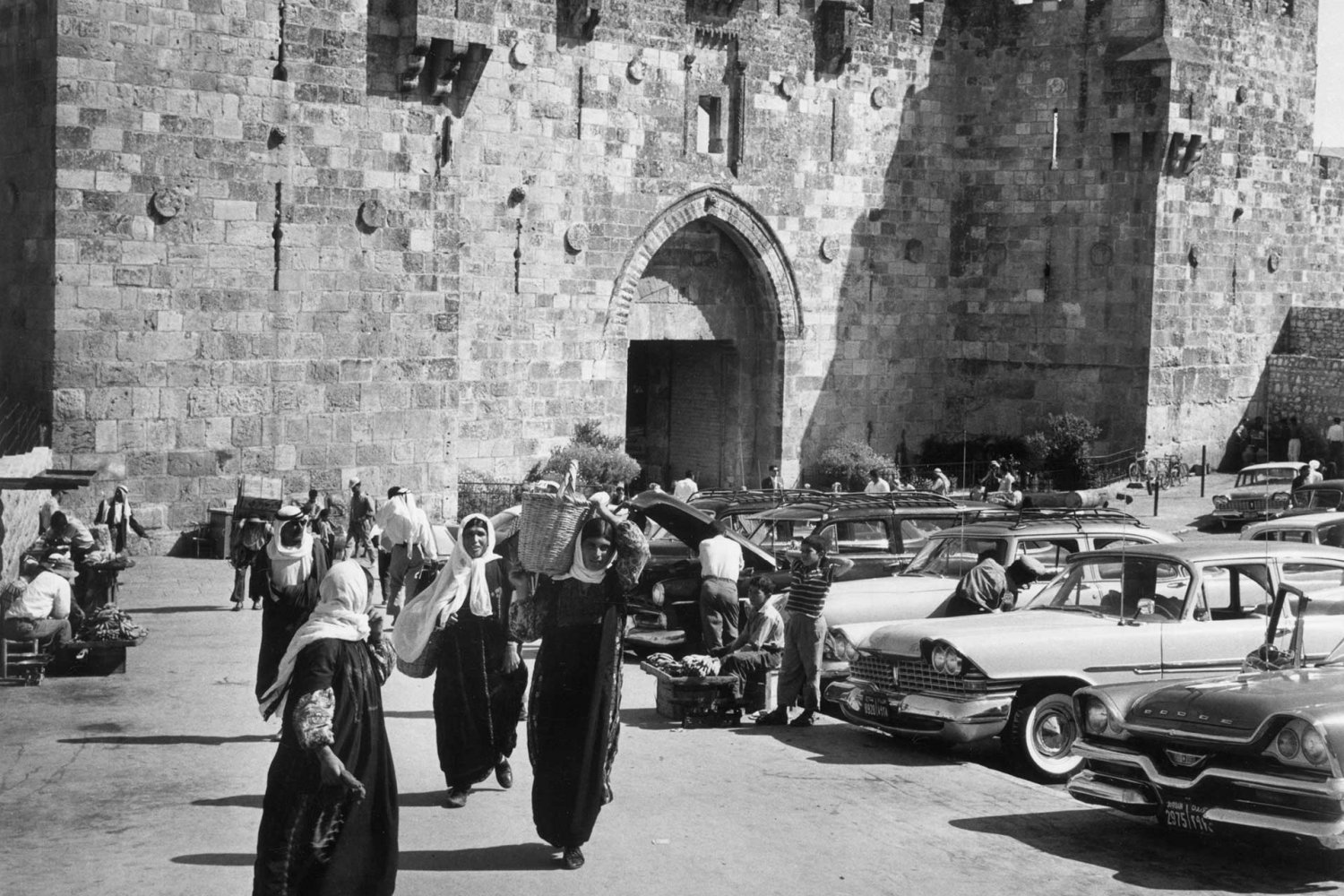
Credit:
Ullstein bild, Getty Images
A Diaspora Jerusalemite Remembers
Snapshot
When Philip Farah left Jerusalem for the United States in 1978 to go to graduate school at age 27, he had a clear plan: He would return to Jerusalem—that’s where he saw his future, and where he wanted to live and work. But fate had other plans, and he learned to live abroad in the diaspora. We spoke with him about the Jerusalem of his childhood, why he chose to leave, and how he maintains his connection with a city he describes as “a huge part of my psyche.”
East Jerusalem in the 1950s
So what was it like growing up in the 1950s and living on the border of East and West Jerusalem? I put the question to Philip without expecting that he would be able to dig up many concrete memories. The more we spoke, however, the more powerful the flood of images became.
Philip remembers East Jerusalem as a sheltered place to grow up in, a small yet cosmopolitan town. His parents spoke fluent English, and among his close relatives were non-Arabs who had married into the family, which undoubtedly contributed to his impressions. He attended St. George’s School, a stone’s throw away from his home. He describes it as a colonial school with English, Welsh, and Scottish teachers in addition to the Palestinian faculty; the school had an English club that put on Shakespeare plays.
Philip’s days included trips to the newspaper stand right across from Schmidt School. “As a young teenager, I used to run from home to his newspaper stand to buy Superman and Samir comics. The Egyptian publisher Dar al-Ma‘arif had a series for young readers, and I read everything there.” The owner, Amir Da’na, was a prominent figure in East Jerusalem. When Da’na died, the news was carried in all the local newspapers.
Around 1958, Philip’s family moved to a slightly larger apartment right at the border separating East and West Jerusalem, very close to the Mandelbaum Gate (the checkpoint between the Jordan- and Israel-controlled parts of the city).
Philip remembers his father’s habit of walking five miles to Bethlehem on the day preceding Orthodox Christmas. Occasionally Philip and his friends accompanied him. Other memories are less benign and revolve around the catastrophe of 1948. Protests against the Baghdad Pact in the mid-1950s drew large numbers of protesters to the streets, where they were met violently by the army and the police. He recalls occasional armed skirmishes between the Jordanians and Israelis across the nearby border. When there were curfews and school was canceled for day students, Philip would jump over the fence and join the boarding students for scaled-down school classes and other activities led by teachers who were also boarders at the school.
The neighborhood’s war-damaged buildings were an ever-present reminder of the violent events that had ripped the country apart. The UN had an office right across the street from Philip’s apartment building, and he recalls seeing there blindfolded Palestinians, Jordanians, and Israelis slated for released in exchange deals. Recalling these scenes 60 years later, he muses about how similar to one another they all looked.
An unsettling memory surfaces in his consciousness: As a child living near the Jordanian troop encampment, he recalls interacting with the soldiers. One day, one of them had an unusual favor to ask: An unexploded hand grenade had rolled into the Israeli side, and the soldier asked if any of the children would be willing to crawl under the barbed wire fence to retrieve it. He worried that his supervisor would berate him if he found out. Philip volunteered for the task. Looking back, it is hard to determine which is the more appalling fact: that an adult would ask for a child volunteer for a potentially fatal task or that he would find any takers. Philip did not tell his parents what he volunteered to do until many years later.
The Nakba and Its Trauma
I asked Philip whether his parents ever told him about their experiences during the 1948 War. As is common with survivors of mass collective traumas, his parents hardly ever talked about it. In one memoir after another, children of survivors of the Palestinian catastrophe describe how they had to educate themselves about the events that had permanently seared their parents.
As an adult, Philip became interested in his father’s journals, where his father had meticulously recorded events in his life over a period of more than half a century, beginning in the mid-1930s. From the journal, Philip learned of the terror that his parents and their two children endured in the months leading up to the end of the British Mandate, as Jewish militias pursued a campaign to depopulate as much of West Jerusalem as they could. He learned that his father’s brother had almost been killed in the King David Hotel bombing and that the family felt the impending danger more acutely as a result of the terrorist bombing of the Semiramis Hotel by the Jewish armed group, the Haganah. The campaign to expel Palestinians from West Jerusalem was particularly hard for them to understand, because they had close Jewish friends who did not subscribe to Zionist ideology.
Philip shared with me an extended excerpt from the journal that covered the period 1947 and 1948. His father rather tersely documents episodes of terror committed by Jewish militias against the residents. (There was no Arab army to confront them, and the British were still nominally in charge.) Allusions to the atrocities continue, entry after entry, until the entry for Easter Sunday, May 2, 1948: “We were obliged to leave the house suddenly under volleys of fire.”
Gregory and Mary Farah moved with the children and seven other close relatives to the Lutheran Compound in the vicinity of the Holy Sepulchre in the Old City. A devout man, Gregory prayed that they would all be safe.
For at least two years after Israel was established, the family’s life was turned upside down and they fled their homeland for Jordan. Finding no long-term employment and with their funds quickly diminishing, they returned to Jerusalem and managed to rent an apartment in Sheikh Jarrah. During part of that unsettled time, Gregory was frantically searching for his mother, who had been separated from the rest of the family during the chaos and whose whereabouts was unknown for several months.
Philip would learn these details years later, when he read his father’s diaries. But he had a basic understanding of the events of 1948, partly thanks to the maid Rasmiyya al-Jundi, whose ankle was scarred from a bullet she had received during the massacre at Deir Yasin. He visited her and her mother at the home they moved to when they fled Deir Yasin, and they spoke about what they had experienced.
In 1966, Philip was a 14-year-old teenager living a fairly comfortable life and attending a private school. But he and his friends were just starting to become politicized, and they understood that the political situation was unstable and that a war was likely.
The 1967 War
When war finally did break out, it created an even larger gash in the map of the Arab world. The remainder of Palestine was now occupied; Syria’s Golan Heights, occupied; Egypt’s Sinai Desert, occupied. And another human catastrophe unfolded as thousands of refugees were pushed from Palestine across the border to Jordan.
The war caught the Farah family off guard. Philip’s parents were in Beirut, where Gregory had been scheduled for surgery to correct his deafness. The two older children, Johnny and Grace, were studying in the US. Philip and his younger brother George were in the care of their maternal aunt in Jerusalem, but she worried about war breaking out while his parents were away and took the children to Amman, Jordan, to stay with his uncle’s family there. A few weeks later, they were joined by their parents, and enrolled in a school in Amman in the fall.
Events took an ironic turn. Mary decided to return briefly to Jerusalem, intending only to check on her sister- and brother-in-law and Rasmieh, retrieve some of her children’s clothes and get some money, since no one had packed or budgeted for an extended stay away from home. In Israel’s terminology, she was an infiltrator; Israeli patrols killed many Palestinians trying to cross the border to return to their homes. (An international law expert might say she was exercising her right to return to her home at the end of hostilities.) Whatever circuitous route Mary took to sneak into Jerusalem, luck was on her side: She happened to be home when the Israeli occupation authorities were conducting a census of its new subjects. Thus counted, she was able to get an Israeli-issued identification card, which meant that she could petition for family reunification for the rest of her immediate family. Then she infiltrated back to Amman. By January 1968, the boys and their parents were reunited in newly occupied East Jerusalem.
To say that it was a different city than the one they had left months earlier would be a wild understatement. East Jerusalem seemed to be the focus of Israel’s attention, and the Israeli occupiers moved quickly and aggressively to make it theirs. In his book Popular Resistance in Palestine: A History of Hope and Empowerment, Mazin Qumsiyeh describes Israeli policy in East Jerusalem after the 1967 War: “The Israeli authorities proceeded with large-scale settlement activities in East Jerusalem and within a few years, they had confiscated nearly a third of the private lands of East Jerusalemites. . . . The first priority for the Israeli occupation was to take over and integrate Jerusalem into the ‘Jewish state.’”1
The Moroccan Quarter was demolished. Israel tried to force politicized changes to the school curriculum, which was met with widespread protests and strikes. In April 1969, Israel passed laws requiring Palestinian businesses in East Jerusalem to register with the relevant Israeli authorities. It began excavations in the Haram al-Sharif area, which prompted Jordan to raise the matter with UNESCO. And in August 1969, al-Aqsa Mosque was set on fire by an Australian working on a Jewish settlement.
The war, and the direct experience of Israel as an occupying power, further politicized Philip and his peers. He recalls that Israeli authorities arrested his schoolmates and gave them stiff sentences, imposing curfews that were met with street demonstrations. Schoolchildren were beaten for no reason; some were arrested and put on trial.
Philip was barely 16 years old when he graduated from high school and enrolled in the American University of Beirut (AUB) in the fall of 1968. Students the world over were organizing and making demands of their universities and their political leadership, and Lebanon experienced the same wave of student activism. In the late 1960s and early 1970s, AUB had a strong student council, and it organized demonstrations, teach-ins, and strikes to express the student will. The experiences at AUB furthered Philip’s political education. He graduated in 1973 with a bachelor’s degree in political science and returned to Jerusalem, eager to make a contribution in his hometown.
Jerusalem in the 1970s
In the summer of 1973, it was hard to market a bachelor’s degree in political science in Jerusalem, but English teachers were in demand. Philip and a number of college-educated people found work as teachers at the Arab Institute (which later evolved into Al-Quds University). He taught English to 11th and 12th grade students.
If Philip was in a holding pattern in his professional life, personally and politically, he was completely engaged. Israel’s occupation was only a few years old then, and repression was still direct and intense. So was popular resistance. It was a time of rapid land confiscations and settlement construction; he recalls that even then, Israeli settlers were threatening the al-Aqsa Compound. Mass arrests were common, and political leaders were deported. Palestinians were enraged and took to the streets in massive numbers throughout the occupied Palestinian Territories (oPT). Looking back, he thinks the demonstrations were mostly spontaneous, not organized centrally. The Israelis had no idea how to handle the demonstrations, and so they arrested all kinds of people—journalists, union members, artists, musicians, students, others. Prisons soon filled up, so those detained were often fined and released.
Philip recalls the 1970s as being a remarkably creative and dynamic period in the oPT. Jerusalem had an active music scene, which started partly with Western-style bands (the Flintstones, the Yarnies, the Silver Tones) creating their own songs. Creative people were coming together and producing art that grew out of their lived conditions. He was friends with the Ashrawi family siblings who formed a band, Bara’em; they performed Fairuz songs but also composed their own, with political lyrics, including those of Palestinian poets. Some of these musicians were also part of the theater troupe Balaleen, which later evolved into East Jerusalem’s el-Hakawati Theatre.
Philip describes how actors, some of whom had blue-collar day jobs, would come together to work on an artistic production. They began sessions with a period of physical exercises and then discussed a social or political issue. Then they would go off to write a script that grew organically from the discussion. The plays did more than merely provide an evening’s entertainment; they raised questions that demanded audience engagement. One of their productions was a Bertold Brecht play, The Good Woman of Szechuan, adapted to the Palestinian context.
Philip’s friends at Birzeit University were involved in discussion groups with Israeli university professors opposed to the occupation. Through them, he met an Israeli professor and his wife, Judy Blanc; she would become a close friend and one of the founders of Women in Black, an Israeli group that advocated for the end of the Israeli occupation and monitored soldier treatment of Palestinians at checkpoints. The Israeli academics in these groups stood in solidarity with Birzeit University when the military closed it for months on end and raided the university campus.
During this period, Philip began to meet members of Matzpen, a socialist anti-Zionist organization. This activity was very dangerous because Matzpen was closely watched by the Israel Security Agency (also called Shabak or Shin Bet). He believes that it was the reason for his arrest and imprisonment for two months in 1976. (The organization was mentioned only in passing during his interrogation, as though the interrogators didn’t want to acknowledge the existence of an organization that might attract Palestinians and Israelis working together against the occupation.) During different interrogation sessions, he was accused of belonging to the armed Popular Front for the Liberation of Palestine, or the Popular Democratic Front for the Liberation of Palestine, but he thinks these accusations were primarily meant to intimidate him. Philip had never joined any of the Palestinian armed resistance organizations, and resisted signing any false confessions, despite the severe beatings and abuse.
After one day of solitary confinement, he was moved to a large cell where the other detainees were mostly Jews accused of petty crimes. Two of the inmates happened to be the brothers Reuven and Eliezer Abergel of the Israeli Black Panthers in Jerusalem. They had been arrested on a minor drug charge. The exposure showed him that Black and Arab Jews had a different experience of Jewish “democracy” than their European counterparts.
After four weeks of interrogation, Philip was transferred to Kfar Yuna prison near Netanya under administrative detention. The British had used the administrative detention system in their colonies and in Ireland, and they implemented this legal black hole against Palestinians and even Jews during their 1921–48 Mandate in Palestine. Not surprisingly, Israel also added it to the state’s bag of tricks for controlling Palestinians in the oPT. It is a minimalist approach to a farcical process: Detainees are not tried publicly, nor informed of the reason for their detention (besides being designated as “threats to Israeli national security”), but subject to indefinitely extended prison sentences. More than 700,000 Palestinians from the oPT have spent time in administrative detention in Israeli prisons since 1967.2
Two years after his release from prison, Philip left for the US to go to graduate school, fully intending to put his degree to work back in Jerusalem, where he felt he belonged.
Activism in the United States
Philip married his girlfriend, Anaya, and the two made their way to New Mexico and enrolled in graduate school. While working on a doctoral degree in economics, he became active in student and community activism. A fellow activist who had worked with him to establish a New Mexico chapter of the Arab American Anti-Discrimination Committee, Hazem Mansour, went to the oPT to visit his family and was promptly arrested by the Israelis.
Philip was due for a visit himself. He held a laissez-passer issued by the Israeli government that must be renewed in country every five years. He then made what he describes over 40 years later as “one of the most difficult decisions of my life.” Philip decided to let his travel document lapse. Doing a painful cost-benefit analysis—the type of calculation that Palestinians make regularly—he thought the risk of being imprisoned was simply too great. He was a known figure in his community who actively denounced the occupation, and he would be subject to an opaque legal system in which Palestinians had no rights. His parents had already emigrated to Canada in 1980, so the most compelling reason for a visit no longer existed.
By letting his laissez-passer lapse, Philip lost his ability to return to Jerusalem as a resident of the city; he was now a foreigner requiring a visa. But he did not let go of Jerusalem.
Visiting an Unrecognizable Landscape
Philip’s first return visit to Jerusalem took place about 10 years after he left, in 1989, during the First Intifada.
“Things were so different,” he says. “I’ll give you an example. A bunch of us used to regularly hike. I suggested to a friend that we go for one, and he said ‘Habibi, times have changed. Men and women walking in the countryside would raise eyebrows and Israeli settlers and patrols are all over the place. It is too dangerous.’ The Intifada was still ongoing, albeit less intense than the previous two years. In general, I felt things were far more tense than before I had left.
“There were some big changes to the landscape. I went to visit our home in Beit Hanina. After 1948, my family never owned a home; we were renters. [When I left in 1978], the apartment was among the last few before a stretch of vacant land. The next built-up area was the village of Hizma about two miles away; there had been nothing but arid land in between. I used to go there to watch birds—there weren’t even any walking trails. By the time I went back in the late 1980s, the land was completely built up. I didn’t recognize the streets. I stood there and cried like a baby when I saw that our old home was now right at the edge of the sprawling Israeli colony of Pisgat Ze’ev, built on confiscated Palestinian land.”
With every visit he made after that, he had the impression that Jerusalem was more and more subdued than the previous visit. In an article he wrote in 2013, he cited a UN report that included these disturbing statistics:
The economy of East Jerusalem accounted for 15 percent of the economy of the Palestinian occupied territories prior to the signing of the now defunct Israeli-Palestinian 1993 Peace Accords, but this share has now shrunk to an estimated 7 percent. Poverty among Palestinians in East Jerusalem has been rising steadily over the past decade, whereby 77 percent of “non-Jewish” households in Jerusalem were under the Israeli poverty line in 2010, compared to 25.4 percent of Jewish families who lived below the poverty line in the same year. Israel has isolated East Jerusalem Palestinians from the remainder of the occupied Palestinian territories, but it has intentionally failed to integrate them into the Israeli economy, thereby leaving them in a “developmental” and a “legal, demographic, and political limbo.”3
In 2012, Philip was invited to colead with Anna Balzer a human rights delegation to the oPT, organized by Interfaith Peace Builders (which later changed its name to Eyewitness Palestine). So many profound changes and events had taken place during the more than 20 years since his Intifada visit. A young man from Lifta who worked with a Jerusalem defense committee took the delegation on a tour of the settlements. The delegates saw how Israeli settlements, strategically placed on hilltops, completely encircled and suffocated Jerusalem. Ten years later, he recalls how profoundly unsettling that experience was.
Another memory:
One thing that really struck me during that trip took place in Susia [a village in the Hebron district]. Some young man from there told us how the settlement next door decided to cordon off the original village site from which the Susia villager had been expelled. One part became a Jewish pilgrimage site, because Israeli authorities claimed that, in the distant past, a Jewish holy man lived there. The area became a tourist attraction requiring entry fees, and drawing mostly Jewish religious visitors and tourists. The Palestinian mukhtar of Susia wanted just to visit the site of his previous home, but he was asked to pay the entrance fee. Of course, he refused and turned back with disgust. I was reminded of the Baramki experience. That really stayed with me.
Philip was referring to the former acting president of Birzeit University, Gabi Baramki, whose home in the Musrara nighborhood was confiscated in 1948 and turned into a museum (named without irony “The Museum of Coexistence”). To visit his home, Baramki had to get in line with Israeli museum goers. When told that he needed to buy an entry ticket, he laughed uproariously.4
Jerusalem, the “Canary in the Coalmine”
Over the years, Philip has written more than a dozen op-eds. In one article, he describes Jerusalem as the canary in the coalmine that is slowly being strangulated. Several Israeli strategies working in tandem are making that happen: the Separation Wall; the closure regime putting Jerusalem off limits to most Palestinians; and the encirclement of the city by Israeli settlements. If that could be done to Jerusalem, a city holy to three monotheistic traditions, a city that has always hummed with a well-rooted indigenous community and international trekkers, what did that suggest about the fate of areas that were less in the public eye?
I ask Philip about his relationship to Jerusalem today, after emigrating to the US more than 40 years ago. He answered, with emotion in his words:
I think of Jerusalem every day. It is a huge part of my psyche. When I think of how Jerusalem has been changed during the course of the occupation, the words that come to me are ghettoized and pauperized. But it is a strange mixture: the Israeli occupation did make Jerusalem more subdued, but, to me, and to tens of thousands of its people, it’s the most beautiful place in the world. Just walking the streets and visiting places of my childhood is pure pleasure. So many landmarks are still there, especially in the Old City.
And, of course, food memories were very vivid for Philip:
All the places to which I used to accompany my father when we did the family food shopping: Izhiman where we bought our freshly roasted ground coffee; al-Hidmi, where we bought cheeses, olives, and halawa [sesame paste sweets]; Ghosheh, the butcher. These places are still there. And don’t forget Jaafar knafeh or the Zalatimo mutabaq [a layered sweet] to which my Dad would treat us, the children, after we had our hair cut by the barber, Abu Basil.
I end our exchange with a question about what gives him hope. His response was heartening:
Most of all, what gives me hope [are] the mostly young grassroots activists, resisting the apartheid regime in all of historic Palestine and in the diaspora. The 1948 Palestinians who refuse to submit to Israel’s definition of them as “Israeli Arabs,” separate from their Palestinian people, and who rose to solidarity with the 2021 intifada of Sheikh Jarrah, Silwan, Damascus Gate, and al-Aqsa Mosque in 2021. The people of Beita and Jenin in the north of the West Bank and the Hebron Hills in the south, resisting the Israeli colonial settlers. The people of Gaza who, despite living under some of the most violent and oppressive conditions in the world, are steadfast and producing beautiful resistance literature, music, and art. The young people of the diaspora producing articulate ambassadors of the Boycott, Divestment, and Sanctions movement and achieving impressive successes all over the world with their advocacy and protests.
I hear him to be saying that legends are being made daily, offering a way forward.
Notes
Mazin Qumsiyeh, Popular Resistance in Palestine: A History of Hope and Empowerment (New York: Pluto Press, 2011), 116, 117. See also Interactive Encyclopedia of the Palestine Question, Overall Chronology, for events in the occupied West Bank and Gaza Strip in the early years of the occupation.
“Fact Sheet: Palestinian Political Prisoners in Israel,” Institute for Middle East Understanding, September 8, 2021.
Philip Farah, “The Ghettoization of East Jerusalem,” Huffington Post, August 5, 2013.
Suad Amiry, “Gaby Baramki Visits the Museum of Coexistence,” Jerusalem Quarterly, no. 51 (2012): 36–43.

